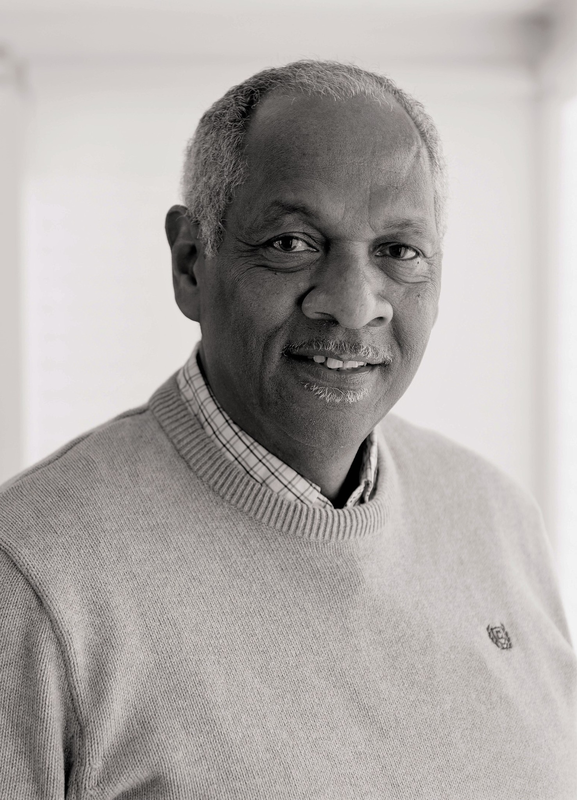|
Patrick Henry was born in February of 1952 in Berlin, Maryland to Samuel Henry, Sr., a Navy veteran of World War II, and Marigold Kee Henry from Seaboard, North Carolina. Reared on the Eastern Shore of Maryland, Patrick’s primary and elementary education was at the Flower Street Elementary School in Berlin, and his freshman year of high school was at Worcester County High School. In the fall of 1965, with the integration of the public schools, Patrick attended Stephen Decatur High School, from which he graduated in 1970. He did not attend college immediately following graduation from high school, but several months later he enrolled in Maryland State College, now the University of Maryland Eastern Shore (UMES). At UMES, he majored in art, something he developed an interest in at an early age, but he was basically self-taught. He began painting by numbers when he was a student at Flower Street School. His interest in oil painting and painting began about age 14 or 15. His first painting was sold in 1968 while he was still in high school. Most of his early subjects were of his environment, of servitude, and black leaders, such as Reverend Dr. Martin Luther King, Jr., Stokely Carmichael, H. Rapp Brown, and others of that era. At UMES, his master professors were Ernie Satchell and Jimmie Mosely, his mentor and the art professor for whom the Mosely Gallery at UMES was named. While studying at UMES, Patrick Henry was judged the Most Talented Student. He graduated from UMES in 1975 and was the first in his family to graduate from college. His graduation was a joyous occasion, but it was also a very sad time of his life because his father passed away about the same period. Upon graduation from college, Patrick’s first teaching job was teaching art at his alma mater, Stephen Decatur High School. After two years of teaching, he made the decision to leave the teaching profession and to pursue his art on a permanent basis. His goal was to attend Virginia Commonwealth University and obtain a master’s degree in Art Education. Unfortunately, due to a family crisis, he was asked to return home. He returned to Berlin, helped his brothers with masonry, construction and maintenance work, and pursued oil painting on a part-time basis. However, by the 1980’s, he began to actively pursue his passion. For thirty years, the environment of the Eastern Shore dominated his canvasses. He referred to the Shore as... ...”a land of people: watermen, farmers, brick masons, teachers and day laborers. They live their lives intertwined-knowing each other and the land around them with a depth of knowledge that is not forgotten as the years go by and as the people and the land changed." For Patrick Henry, art is his passion, and he has compared art to his heart beat. For Patrick, art and his heart beat, are synonymous with his existence. They are as intertwined as the land and people of the Eastern Shore of Maryland. Art was also a challenge for him, especially in a place where there is often no appreciation of art, often a lack of understanding of its value, or a need for financial assistance for it to survive or thrive. By the late 1980’s and early 1990’s, Patrick Henry was solely involved in honing his craft and participated in numerous exhibitions throughout the Mid-Atlantic region and various galleries on and off of the Eastern Shore. A show in Annapolis, Maryland exposed his work to collectors beyond the Eastern Shore. A major mural commission at Atlantic General Hospital highlighted his career in the 1990s and his pen and oil graphics were marketed through t-shirts, tote bags and other printed art products. In1996, Patrick was the recipient of the Berlin Award, presented annually to an individual who has by unselfish efforts and dedication, made outstanding contributions in service to the Town of Berlin and the immediate region. Patrick Henry has presented numerous exhibits and as a result has been the recipient of various awards and accolades, including the following: • “Moments: In Color, Geometry, Texture and Light,” which premiered at the Ocean City Center on the Arts, July of 2015. • ‘Ephemeral Moments,’ an exhibit held at the Academy Art Museum in Easton, Maryland, February 4-April 1, 2012. • The “Amusement” series, a 27-piece collection which depicted some of Ocean City’s most memorable amusement and entertainment features was completed. Some of the pieces were purchased as the fifth addition to the Artists of the Eastern Shore Collection established by Dr. Amy Stephens Meekins and family. (2011) The original oil painting ‘Trimper’s Luna Park, Ocean City, Maryland-circa 1925, is prominently displayed in the Teacher Education and Technology Center (TETC), now Conway Hall, at Salisbury University, Salisbury. • The Maryland Life Magazine selected Patrick Henry as the Lower Eastern Shore’s Finest Artist in 2011. • Patrick’s paintings titled “Up! Up! And Away” and “Foggy Harbor-West Ocean City” were added to “Berlin Milling Company” (originally bought by the Reginald Lewis Museum in 2010) became a part of the Reginald Lewis Museum Permanent Art Collection, October 31, 2014. • “Points of Juxtaposition: A Gathering of Eight African-American Artists” was presented at the Mosley Gallery at UMES, February 1-26, 2010. • “Maryland Artist Showcase: Works of Art by Patrick Henry” was presented at the Reginald Lewis Museum, in 2008. • “Patrick Henry: Into the Light,” exhibit was held at the Reginald Lewis Museum of African American History and Culture in Baltimore, Maryland, 2007. • Patrick Henry was named “Delmarva’s Best Local Artist” by Salisbury’s The Daily Times, Salisbury, Maryland, 2005. Over the years, Patrick’s horizon has been broadened and included other subjects than the Eastern Shore. He is also working in a special program to encourage young protégés. The four facets of the program are visual, musical, performing arts, and literary arts. The ultimate goal of the program is to inspire young people to appreciate art, to become great artists, to preserve art and to help it thrive. Patrick also believes that if artists can conquer the seven deadly negative curses of doubt, fear, guilt, limiting beliefs, self-sabotage, jealousy, and addiction, and replace them with positive beliefs of courage, freedom, limitless possibilities, self-love, self-worth, and abstinence, they can succeed. As such, Patrick hopes to mentor young artists, help them believe in their passions, and encourage them to succeed as artists and in life. Even though Patrick’s paintings primarily focuses on rural life and the environment on the Eastern Shore of Maryland, his art inspires others to remember the past and scenes that are rapidly fading from the landscape and their collective memories. Recently, Patrick has presented exhibits at the Germantown School Community Heritage Center in Berlin and the Ward Museum in Salisbury, among other venues. The exhibits at those two locations, showed photographs of local individuals from the Berlin area that had been saved and originally stored in a never-used dishwasher. The photographs included those of African American children at play, displays of vintage automobiles, and workers at a former mansion, among other subjects. A September 2023 exhibit, the “Phillips Canning Factory Show,” is presently on display at the Germantown School Community Heritage Center. The exhibit highlights the operations of the canning factories on the Eastern Shore and its impact on the area through photographs and memories of the people of the local area. It also focuses on the often overlooked cultural impact upon the lives of the people who toiled there, especially many of the women. The exhibit focuses on the canning industry, but it also captures the experiences and memories of many of those women who were employed there, as they worked to supplement their families’ income, to survive, and to care for their families. Patrick Henry is a multi-faceted artist whose roots are deeply imbedded in the Eastern Shore. His portraits and paintings of rural, environmental landscapes, and paintings of local individuals tells a thousand stories of strife and successes, while simultaneously depicting the lives of people who toiled so that future generations could survive and thrive. Patrick’s works show that we are who we are because of the subjects he depicts and that the present generation is standing on their shoulders. As such, it is our responsibility to remember those who paved the way for present and future generations. Patrick Henry, a renowned artist, is also a historical artist, who preserves local Eastern Shore history and culture through his art. Dr. Clara Small
0 Comments
Leave a Reply. |
Archives
July 2024
Categories |


 RSS Feed
RSS Feed
